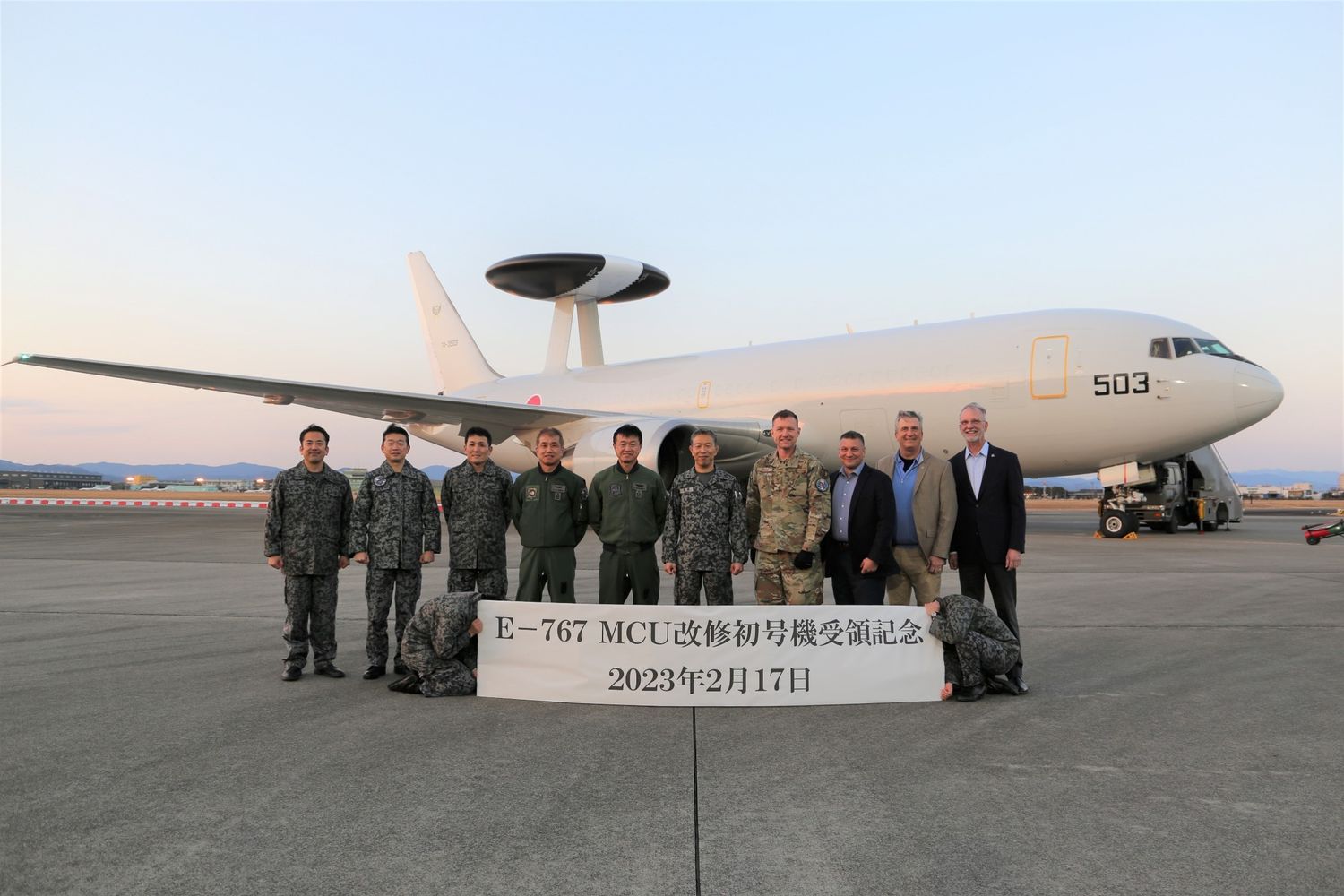Japan recently took delivery of its first modernized E-767 Airborne Early Warning and Control System (AWACS) aircraft after completing a major upgrade.
A team from the Digital Directorate’s International AWACS Division, based at Hanscom Air Force Base, U.S. Air Force, provided the Japan Air Self-Defense Force (JASDF) with a mission computing upgrade, or MCU, for one of its AWACS aircraft. The team also provided ground support systems to several Japanese air bases for mission planning and training.
Col. Riley Pyles, deputy director of the Digital Directorate, says the JASDF has been intensely focused on getting this first E-767 MCU aircraft operational due to frequent incursions by Chinese and Russian unmanned aircraft and systems into Japanese airspace.
“Japan is a critical partner of the United States in the Indo-Pacific Command theater and the E-767 is the premier airborne battle management command and control node for the JASDF,” he said. “If hostilities break out, we’ll want it flying just as much as they do.”
The MCU (Mission Computing Upgrade) modernization is similar to upgrades performed on the U.S. Air Force’s E-3 AWACS fleet. It will provide the JASDF with improved command and battlespace control capabilities, increased real-time information sharing between the services, reduced target identification time and increased lethality.
E-767 AWACS
Japan began operating the first Boeing E-767 AWACS since 1998. The E-767 design responds to the requirements of the Japan Air Self-Defense Force, which was looking for the characteristics of the Boeing E-3 Sentry systems installed on the Boeing 767-200 airliner platform.

The 767-200 was selected because it offers several advantages over the 707. Its widebody configuration offers 50% more cabin surface area and nearly twice the volume of the 707. The 767 can carry a heavier payload, has greater range and flies higher than the 707. The two-person crew and highly reliable twin-engine engines also offer economic advantages.
Permanent upgrade
Previously, E-767 AWACS were upgraded with the Radar System Improvement Program (RSIP) and Mission Navigation System Upgrade through an Air Force contract with Boeing in 2006.
The RSIP upgrade is a joint U.S.-NATO development program that involved intensive hardware and software modification of the existing radar system. The RSIP implementation increased the operational capability of the radar’s electronic counter-countermeasures while improving reliability, reducing maintenance and increasing system availability.
See also: Saab propone su GlobalEye como sustituto del E-3 Sentry de la OTAN
Installation of the MCU modernization package began in August 2019. Successful flight tests and demonstrations were conducted during 2022. The total value of the MCU upgrade is $870 million.
Currently, the AWACS International Division team is implementing the MCU upgrades on the remaining three E-767s.


Comentarios
Para comentar, debés estar registrado
Por favor, iniciá sesión